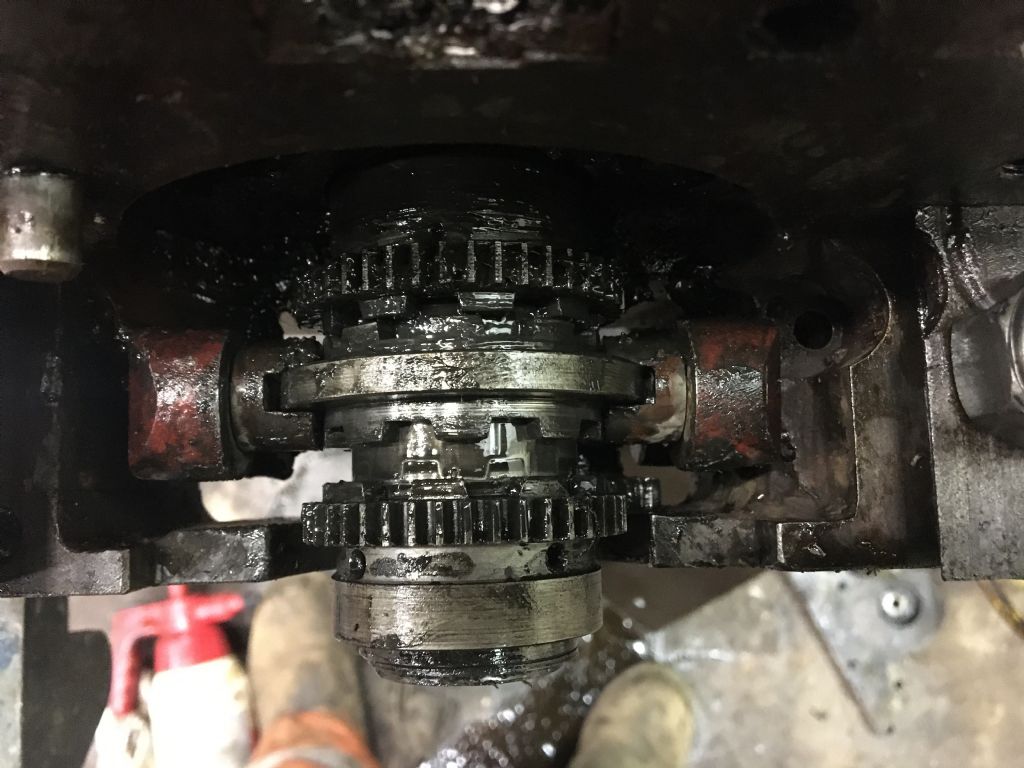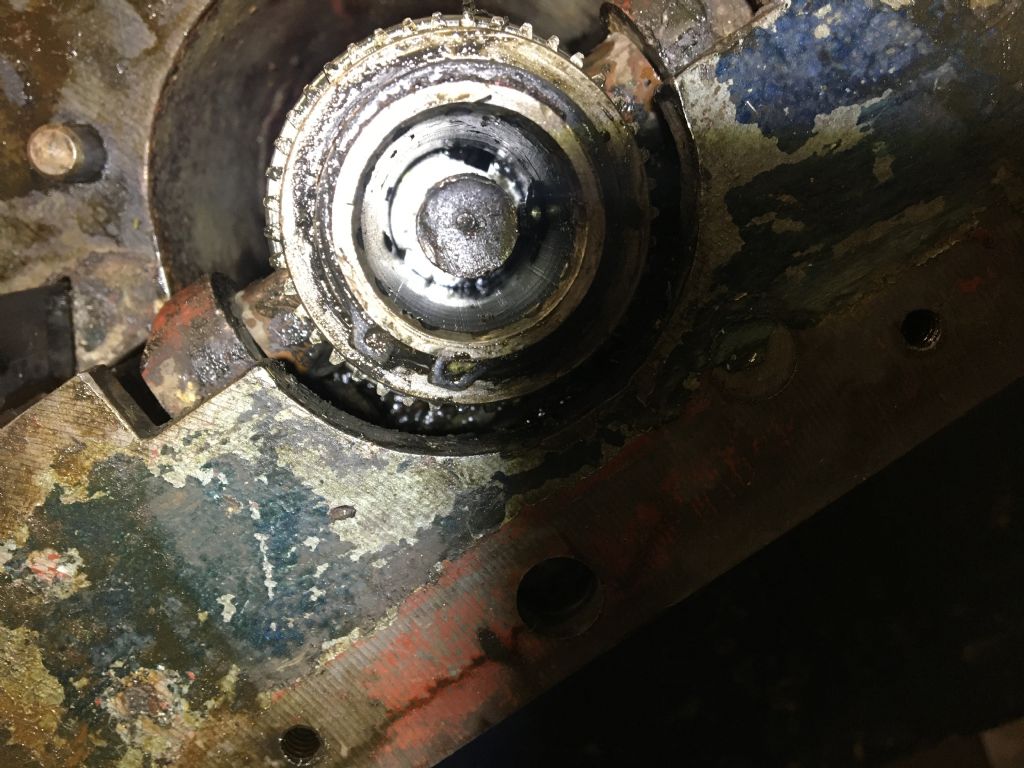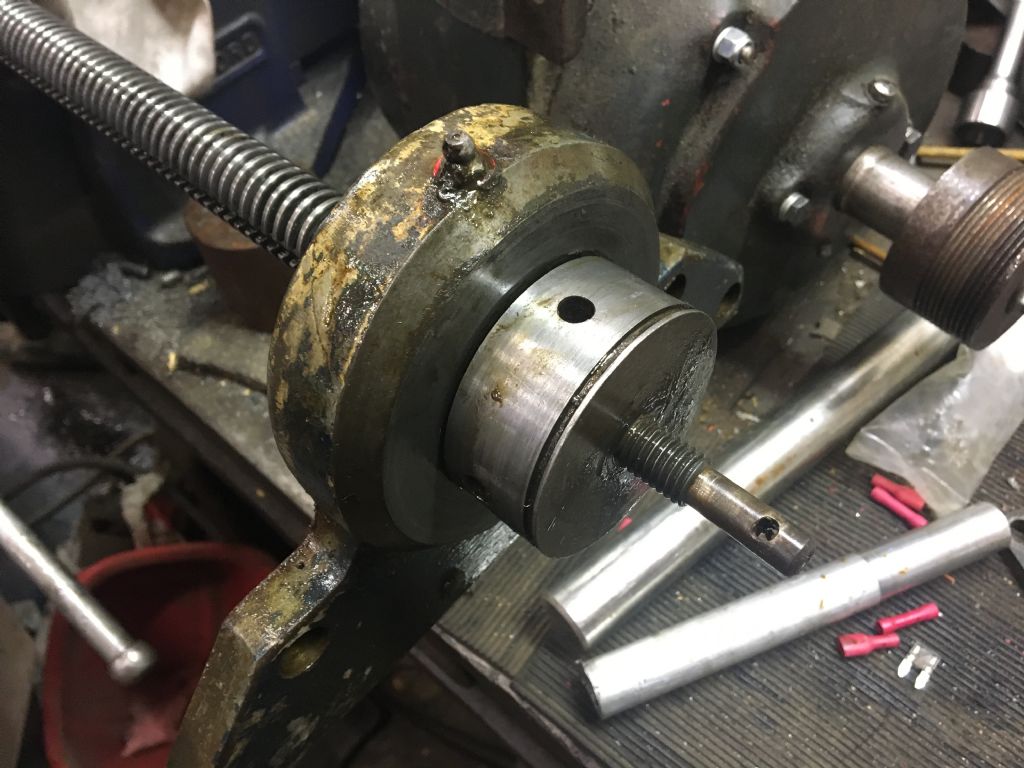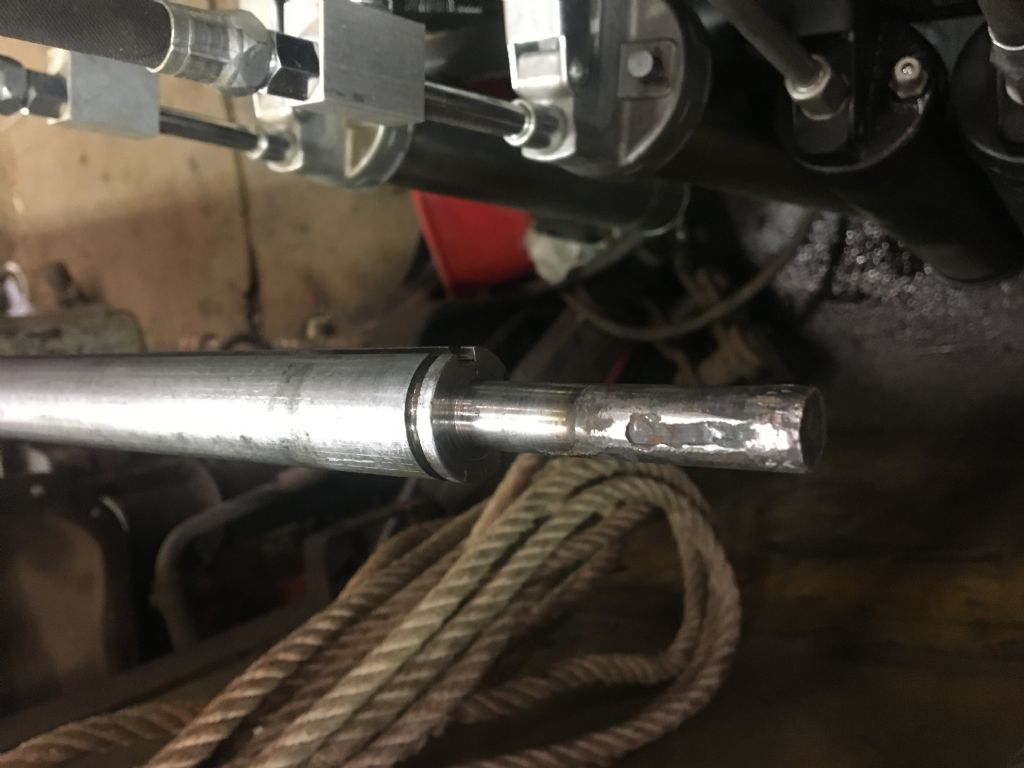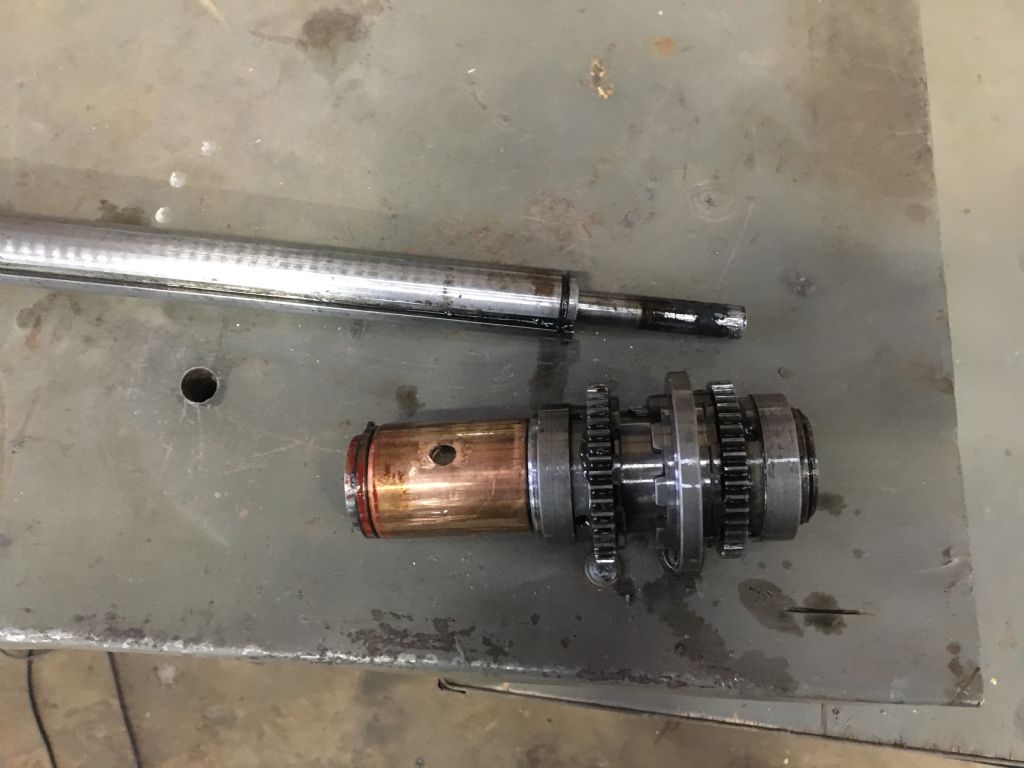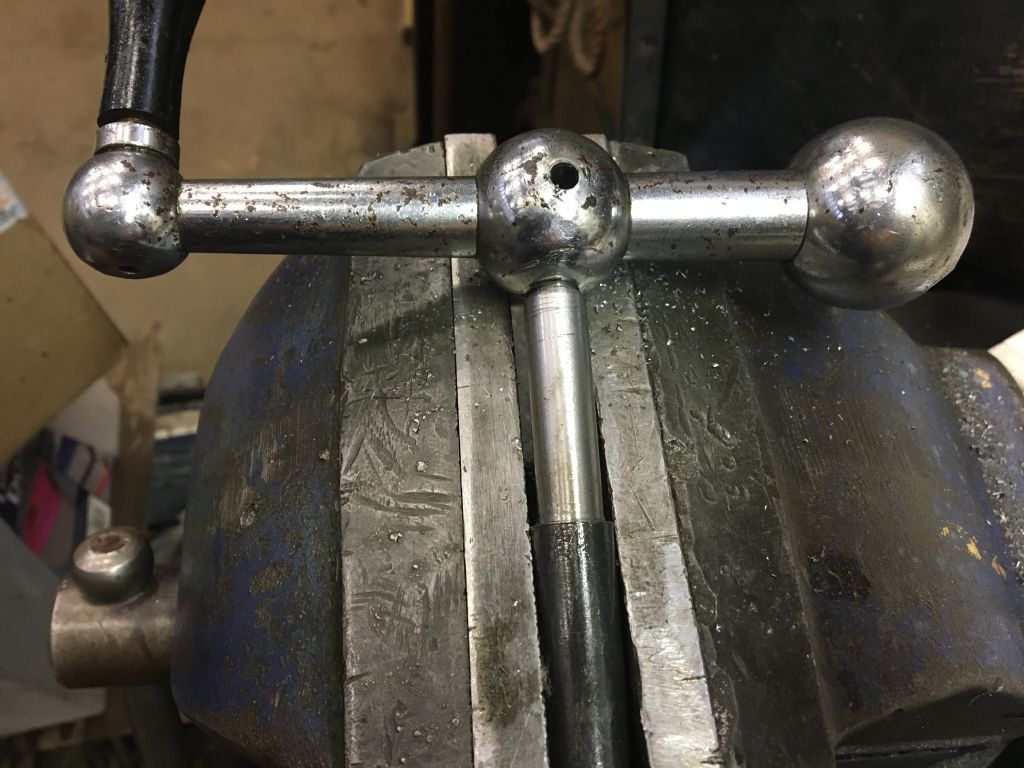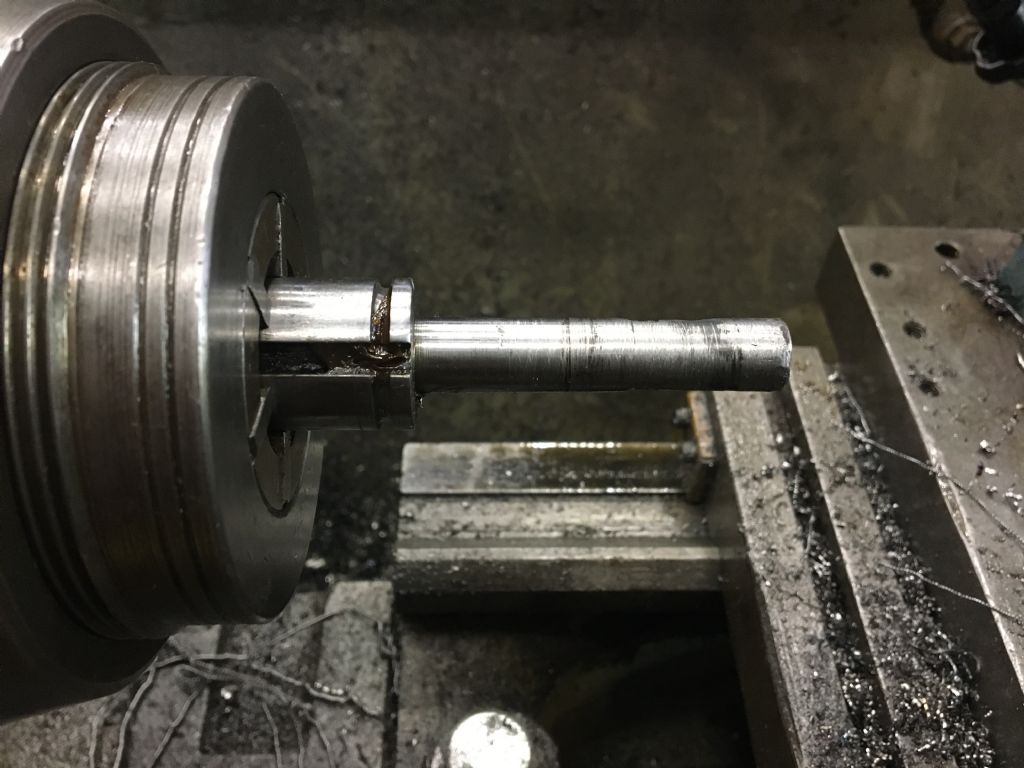Posted by Mark Guy on 22/12/2020 19:48:15:
I’m thinking of a straight 1/2 en16t bar threaded 1/2 unf cut off the damaged ends on the lead screw then bore and tap the lead screw to suit then either lock tight or drill and grub screw in place.
I would just cut off the smaller diameter piece flush with where the step in diameter is, drill and ream the leadscrew and use Loctite 648.
What torque is that part taking? Or are you in the habit of using a Stilsons with a four foot cheater bar on the handwheel? Threading both parts runs the risk of them not ending up concentric, unless you make the shorter bit oversize and finish turn it after locking it into place.
You should probably stone or file the keyway in the entire leadscrew while it is out to remove any burrs. Also have a good look at the drive key that runs in the keyway, and remake it if necessary. It is not the best design, having a keyway along a threaded shaft – the threads act as a cheese grater on the key.
Before you commit yourself to gluing something in, have a think of how you will secure the handwheel and dials to the leadscrew. If you have the necessary taper pin reamer, all well and good, but matching the existing holes in the dial and screw is not simple, especially with five feet of screw waggling about on the end of the piece on which you are working. It might be easier to do the fitting with the small diameter piece free of the main leadscrew. Then you can test assemble everything, make one simple length adjustment and glue it together.
Have a look at the part in the foreground of the lower photo, let us call it the dog assembly. Excessive end float in this can make engaging the power feed like changing gear in an Austin Maxi. A brass washer to shim it all back snug again transforms it to a Honda Accord.
Pete Rimmer.


![20201221_130621[1].jpg 20201221_130621[1].jpg](/wp-content/uploads/sites/4/images/member_albums/55473/883972.jpg)
